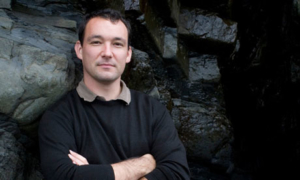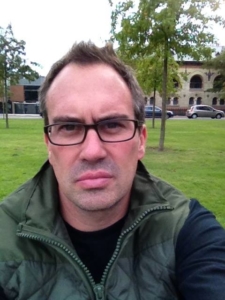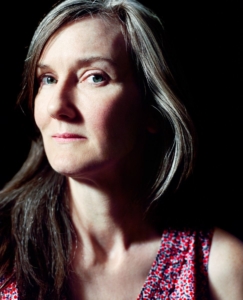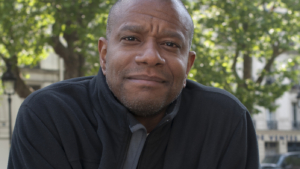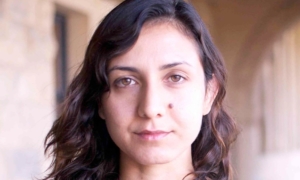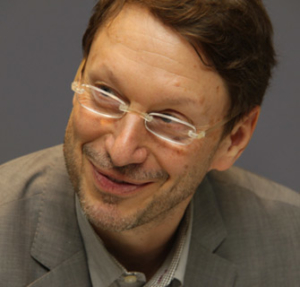“There are questions we could not get past if we were not set free from them by our very nature.”
— Kafka, in an unpublished fragment.
This year Full Stop published over 40 interviews of a range that gives the list below, as well as the task of providing a summary report, a touch of the arbitrary. Earlier in the year we spoke to Esther Cooper Jackson, close friend of Langston Hughes and part of the first great wave of civil rights activists, and as the year closed we spoke to Brittany Bibb and Ashley Nkadi, leaders of a group called the Irate8 that is bringing a national discussion about race, policing, violence, and cultural awareness to their campus at the University of Cincinnati. Lest we forget the artists, we also spoke with Paul Beatty, National Book Award nominated author of The Sellout, a novel that uses a proposed project of re-segregation to shed light on race relations across America’s institutions. We talked with experimental memoirists, students of the Caribbean Apocalypse, first time novelists still committed to writing place in a way that has always distinguished American fiction, poets, illustrators, jazz studies scholars, choreographers, that curious breed of curator that tends to writer’s homes, digital skeptics, agents turned novelists, critics who aren’t afraid to pick a principled fight now and then, and founders of the world’s best archival record label…to name just a few. They are great, you should read them all.
If you would like to see more interviews like these, especially as we enter our fifth year with a host of exciting new projects on the horizon, please consider donating to Full Stop to help us pay more talented, emerging writers.
* * *
Female aggression has such a strange, underreported life cycle, probably because we tend to want to disown it in the first place. Female aggression is wily, like a game of whack-a-mole. It’s a subterranean ordeal. It’s an ingrown hair. Ari is at the beginning of understanding her part in it, and only now because she’s been brought to her knees by such a violent birth. That girls are cruel to each other is not news. That girls are cruelest to themselves, as Anne Carson wrote (quoted by Chloe Caldwell in her great novella Women), is at the heart of the matter, and where the whole mess originates. Girls are cruelty ninjas, stealthy and graceful, not breaking a sweat. We identify so completely with our own suffering, then wish to visit our suffering upon others in turn. It’s a perverse response to the terrors of vulnerability, isn’t it? Makes one wish we could just have a nice simple fistfight and be done.
I think a thing in the periphery can draw the eye. A dead badger on the road as you drive past in a car. It’s been hit by a car, right? The peripheral leaves us unsure. In the space of unsureness, stories grow. We fill in gaps, make connections, generate reasons for things. The obvious limits us, in terms of that. So yes. I see things here, around me, that provoke questions, start a chain. The peripheral can be an entry point. A gap in the hedgerow we can’t resist, a crack in the door.
It might be argued that epistemology — a theory of how we know something in terms of scope and validity — is not a correlative of political ideology. Indeed for much of modern intellectual history conservatives and liberals could be found on both the contextual and universal sides of the epistemological spectrum. Following in the tradition of Edmund Burke, who criticized French Revolutionaries for rationalizing their actions as having emanated from universal values, and who theorized that the good was only relative to the many “little platoons of society,” many conservatives latched onto epistemologies of uncertainty. Conversely, even a contemporary left-wing intellectual like Noam Chomsky hails universal concepts like “human nature” as central to liberation.
Germany doesn’t need AC, not yet, and housing construction is in fact fucking nuts, even in Germany. At least Germany has zoning—Albania looks like the suburbs of Pittsburgh, utter planning chaos. But after ten years of interest rates that are negative if you correct for inflation, you can’t really blame people. C’est la guerre. You can tell from Mislaid that I feel nostalgia for hot nights of skinny-dipping and the lethargy of un-air-conditioned Augusts. But in any case the New South is (or was) the place where a black man can have a full-time job with benefits, and it has nothing to do with AC. That’s just Cary talking. He’s a bit unreconstructed. We all know his great-grandparents raised money in a pinch by selling off their slaves’ kids like puppies. Mislaid isn’t the book where he has an attack of conscience.
I do think that we tend to swing in one of two big ways, which is either super romantic, like the literary equivalent of a sweeping shot of Monument Valley, this natural sublime. Or it’s completely grotesque and threatening, like The Hills Have Eyes kind of thing, where exactly like you say, there are people who never got out. I was always wanting to acknowledge those versions of the West that exist in our cultural imagination and then also nuance and complicate them a little bit more. So I think a lot of the characters in Battleborn are themselves aware of the myth of the American West. There’s that Italian who’s visiting and he has this idea of what they were supposed to do on their trip. Or there are the brothers who go out west and, even already, the American West is there made in the imagination, with brochures and all this hysteria about the Gold Rush. So a lot of the characters are holding that brochure version of the West, or the scary version, up against their actual experience and bouncing off popular culture to make sense of themselves.
I’ve been thinking a lot about the difference between giving a shit and giving a fuck. Or not giving a fuck, I guess. I think that doctor thing is an allusion to people getting pretty shitty medical care. People come in with the same exact problem and get two separate treatments. White people are just getting better stuff. It stems from that — that’s not how I wrote the scene, but it’s an allusion to that, the basic need for someone’s health. I listen to friends’ and relatives’ stories of making the practitioner give a shit. Asking someone to give a fuck about another person.
I was thinking she would want kind of a cool old car because she loved that old Dodge so much, but maybe something from the late 70s. Maybe a Cadillac. I picture her signing for deliveries in a room with French doors. She paints maybe. She probably does collage and oil pastels. And maybe gardens. I can see her pulling weeds or something. But I don’t know, I also hope she just keeps fucking with the world.
When I started working on the book, its primary focus was Pearl Buck. But, as someone who grew up entranced by pop stars and all the internal hierarchies that organized those worlds, I began idly wondering what it would be like if I started thinking about Buck that way, as the chart-topping star whose success inspired both mimics and rivals. As I was starting my research, there were all these beefs within hip-hop — Jay Z vs. Nas, 50 Cent vs. Ja Rule, these flare-ups where artists seemed interested in advancing by going after the “king,” loosely defined. And so I began looking for those kinds of tensions and conflicts within this world of China observers. And eventually I found a lot of these intriguing little rivalries between Buck, Henry Luce, lesser known Chinese writers.
My self-imposed limitations, my rules of thumb, are really just because I like to theorize the ways that images can work and I’m trying to start with the simplest case, or maybe the central case, which would be fiction, i.e. the novel. So just to give you, in a line, the kind of theorization I’m trying for: the simplest thing you can do as a writer, if you want to put a photograph in, is to have your photograph be something the narrator sees. The second simplest thing would be something the narrator remembers. But then already you’re in a very interesting, different place, because then you’re asking your readers to ask themselves: does the narrator have photographic memory? Am I looking into the narrator’s brain? Or is this theauthor showing me a photograph that the narrator saw? So from that one example you see that’s just the beginning, that from there it ramifies, it gets more and more and more complicated.
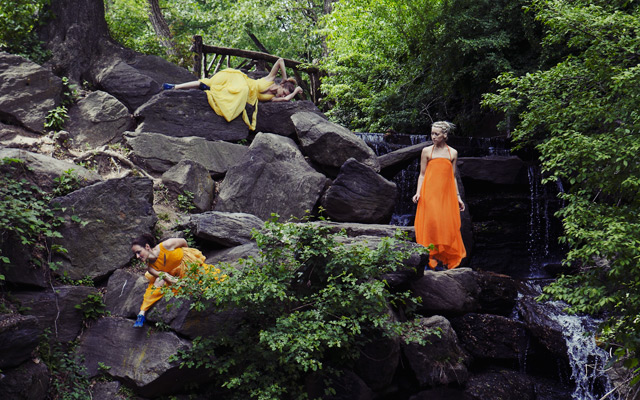 glo: Lauri Stallings and Mary Virginia Coleman
glo: Lauri Stallings and Mary Virginia Coleman
Both Lauri and Mary Virginia talked about vulnerability as a central idea in the work. “It’s very intentional that they’re all women,” Lauri told me. “How are we going to be the most powerful, which also means the most vulnerable? It’s going to be all women in that park, which, typically, if you’re there during the day, outside of exhibition hours, the woods are occupied by mostly men. The work is working from a place of power, and that power is vulnerability. Vulnerability as a craft, some may even call it a principle.”
Mary Virginia: Vulnerability was one of the seeds that the creative team started with, long before the moving artists were involved. Thus the chiffon that we are in, it’s the most vulnerable fabric. When you find your navel and your nose to the ground, and you’re in the middle of the woods in Central Park, it’s hard to get more vulnerable than that. There is not a roof over you, so with the rain, the public, or anything else there is an incredible lack of certainty. Things will never go as you planned them.
This post may contain affiliate links.




